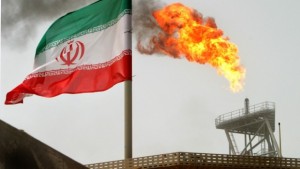 LAUNCESTON,�Australia, Nov 6 (Reuters) - Middle East oil prices may rise relative to other global crudes and physical premiums stand to gain, assuming Asia's major buyers cut purchases from�Iran.
LAUNCESTON,�Australia, Nov 6 (Reuters) - Middle East oil prices may rise relative to other global crudes and physical premiums stand to gain, assuming Asia's major buyers cut purchases from�Iran.China,�Japan,�South Korea�and, to a lesser extent, India have some work to do in order to reduce imports from�Iran�if they are to satisfy requirements for renewing waivers from the United States on sanctions on buying Iranian crude.
While the four major buyers of Iranian crude cut purchases by 11.5 percent to 953,567 barrels per day (bpd) in the first nine months of the year from the same period in 2012, much of this is due to a 40 percent slump in Indian buying.
The United States, which is using sanctions against Tehran in an attempt to force the Islamic republic to open up its nuclear programme to international scrutiny, will review in November whether to extend six-month waivers granted to the Asian buyers.
China, Iran's biggest customer, will have to cut the most in order to meet its own target for a reduction of 5-10 percent in oil purchases from�Iran.
China�bought in about 428,000 bpd of Iranian crude in the January to September period, a gain of 1.4 percent on the same period last year.
To make a 10 percent cut, China would have to lower imports for the October to December period to around 238,000 bpd, or about 240,000 bpd below the 478,500 bpd it imported in September.
Japan's imports from Iran for the first nine months were 194,136 bpd, a gain of 2 percent, and they were 252,200 bpd in September, a jump of 35 percent on the same month in 2012.
If the world's third-biggest crude importer were to also make a 10 percent cut for the whole of 2013, imports for the last quarter would have to drop to around 110,000 bpd.
South Korea�doubled its imports from Iran to 139,700 bpd in September from August, but overall is still closer to its target of cutting them to 125,800 bpd for the June to November period.
To reach the target, South Korea's imports will have to decline to about 110,000 bpd in October and November.
India's January to September imports stood at 193,900 bpd, a slump of 40 percent over the same period last year.
However, India bought 296,100 bpd in September, a massive 96 percent jump on August's imports.
The large reduction in imports earlier in the year has given India wiggle room, but it probably isn't politically a good idea to be ramping up imports from Iran just prior to the U.S. waiver decision if India wishes to be seen to be cooperating with one of its allies.
Leaving India aside, China,�Japan�and South Korea would have to cut imports from Iran by about a 410,000 bpd in October and November from September's levels to come close to meeting targets.
It appears that they are already making steep cuts, with Iran's oil shipments in October dropping 30 percent year-on-year to 719,000 bpd, the lowest since April, according to a Reuters report on Oct. 25.
This was down from 966,800 bpd in September and the risk is that November loadings will also fall as Asian buyers try to limit purchases from Iran.
However, overall imports in Asia are unlikely to fall, particularly in China where new refinery units are being commissioned in the fourth quarter.
This means there is likely to be a scramble for other crudes, particularly the heavy, sour grades that refiners typically get from Iran.
The Brent-Dubai exchange for swaps DUB-EFS-1M, which tracks the difference between the light, sweet North Sea grade and the heavier, sourer Middle East marker, has been narrowing sharply recently.
It was $3.15 a barrel on Nov. 5, slightly up from the six-month low of $3.13 on Nov. 4, but well down from the 2013 peak of $7.10 on Sept. 9.
The backwardation of Oman�futures�has also steepened recently, with the third-month contract now 2 percent cheaper than the front-month.
Three months ago the front contract commanded a 1.4 percent premium over the third, while six months ago it was 1.1 percent and nine months ago it was just 0.2 percent.
The increasing backwardation is a sign that refiners are willing to pay more to secure cargoes for near-term delivery.
Saudi Arabia's decision to raise the official selling price of its benchmark Arab Light grade for Asia for December to $3.45 a barrel over Oman/Dubai from $3.20 for November also shows strengthening demand.
It is also probably the case that demand is improving for seasonal reasons ahead of the northern winter, but the likelihood of fewer Iranian barrels in the market will put upward pressure on the prices of other Middle Eastern grades.
By Reuters
The Iran Project is not responsible for the content of quoted articles.










